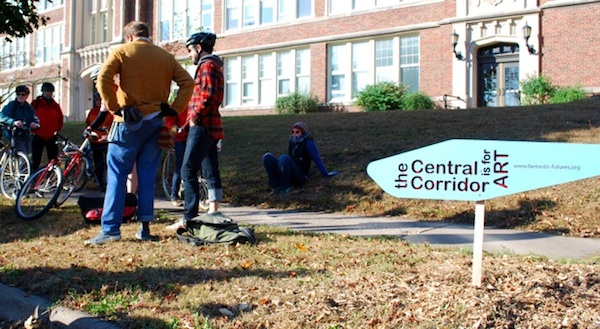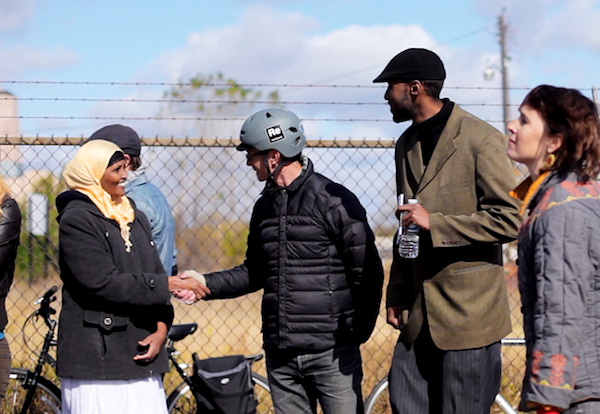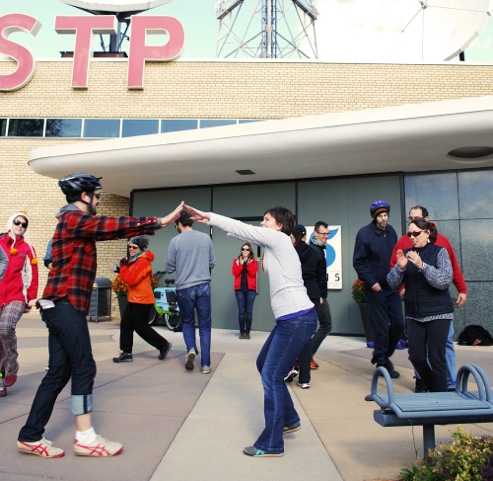
A bike ride across the Central Corridor to plan the future of the arts
By Blaine Merker, Rebar
As a part of a unique artist led public engagement strategy in the Central Corridor Public Art Plan, San Francisco-based art and design studio Rebar led a two-day public bike tour across the Twin Cities to uncover the hidden stories and meet the sometimes unlikely people shaping the future of the Corridor. Starting in the middle of the Corridor on both days, the tour headed toward downtown Saint Paul on Saturday, October 15th and downtown Minneapolis on the 16th—the two ends of the future light rail line.
Rebar’s Blaine Merker and John Bela led the ride with a custom-made bike boom box that kept the riders following along through the varied neighborhoods of the Central Corridor with soul and funk music—a kind of modern day Pied Piper.

Along each leg of the 19-mile journey that the organizers described as a “symposium on wheels”, riders stopped to meet local artists, activists, designers, and residents and hear them give a mini talk on how the future was being shaped at one of the ride’s 15 stops. These tour stop “hosts” included Somali elders residing in Skyline Tower in Saint Paul who have partnered with landscape architecture students at the University of Minnesota to envision an international market and garden at the housing project; an artist and a civil engineer who taught riders how to square dance on the Minneapolis-Saint Paul border; gardening activists trying to transform a city block into a community farm in Frogtown; a Hmong environmental advocate who works to translate ecological understanding across cultures; and many others.

The ride, which is chronicled on the project’s website, was an effort to engage community members in a non-traditional way, getting insights and stories that only physical activity and the camaraderie of the road can offer. It is part of a broad public outreach effort now underway in support of the Central Corridor Public Art Plan, which is being undertaken by Public Art Saint Paul with support from the Knight Foundation and includes consultants Cliff Garten, Todd Bressi, and Via Partnership, in addition to Rebar.

Many of the questions, issues and stories that came out of the ride will be considered in the plan itself, as the consultants work to re-invent the way planning gathers local knowledge. This effort to “get beyond putting post-its on a map” was at the heart of Public Art Saint Paul’s framing of the work as an “artful” public art plan. Additional temporary, small-scale, and experimental art actions are envisioned as a part of the plan in the coming months.

Recent Content
-
Artsarticle ·
-
Artsarticle ·
-
Artsarticle ·

